A survey by the American Automobile Association reveals that the automatic brake of the latest vehicle does not demonstrate its effect during actual driving

From November 2021, new cars sold in Japan are required to be equipped with a
Evaluating Automatic Emergency Braking 2022 | AAA Newsroom
https://newsroom.aaa.com/asset/evaluating-automatic-emergency-braking-2022/
AAA finds serious limitations of Automatic Emergency Braking | Vehicle Service Pros
https://www.vehicleservicepros.com/industry-news/collision-repair/news/21282385/american-automobile-association-aaa-automatic-emergency-braking-absent-when-needed-most
Automatic emergency braking is not great at preventing crashes at normal speeds - The Verge
https://www.theverge.com/2022/9/29/23377376/automatic-emergency-braking-average-speed-study-aaa
AEBS is a system for detecting obstacles and humans to avoid collisions. In 2019, the United Nations Economic Commission for Europe announced a draft regulation to make it mandatory to install AEBS on new vehicles launched in 40 countries, including Japan and the European Union (EU). Since then, a system has been enforced in Japan to oblige new vehicles to be equipped with AEBS.
AEBS uses cameras and other sensors mounted in the front of the vehicle to detect approaching objects and automatically apply the vehicle's brakes when necessary. This has indeed reduced the number of rear-end collisions that occur when the vehicle is moving at low speeds. Both AEBS related software and hardware are updated year by year. Even so, it is known that ``collisions with oncoming vehicles when turning left'' and ``collisions between straight cars at intersections'' occur frequently. It seems that the ratio of situations is as high as 39.2%.
Therefore, AAA seems to have had doubts about 'whether AESB operates at high speed' and 'whether it can detect a moving vehicle'. The AAA said AEBS is based on a low-speed crash standard set by regulators many years ago that has not been updated. He continued, ``By conducting crash tests at faster and more realistic speeds, AEBS should be able to demonstrate maximum performance for drivers.''
Therefore, AAA tests the operation of AEBS when a vehicle traveling at a speed of 30 miles per hour (about 48 km) and 40 miles per hour (about 64 km) encounters a stopped vehicle. In addition to this, we are also testing the behavior of AEBS in 'a collision scene with an oncoming vehicle when turning left' and 'a collision scene between straight-ahead vehicles at an intersection'.
Below is a video showing how AEBS was tested in various situations released by AAA.
Automatic Emergency Braking B-Roll on Vimeo
Operation test of AEBS in a collision scene between cars going straight at an intersection
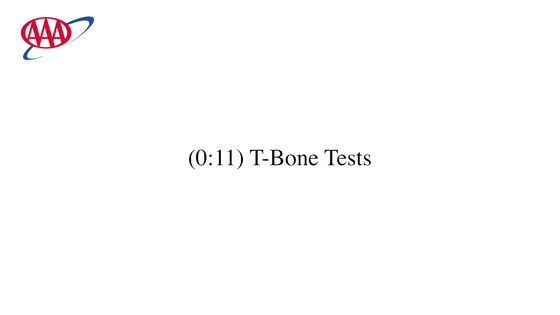
Two vehicles that go straight into the intersection and invade. The left is the vehicle to test the operation of AEBS.
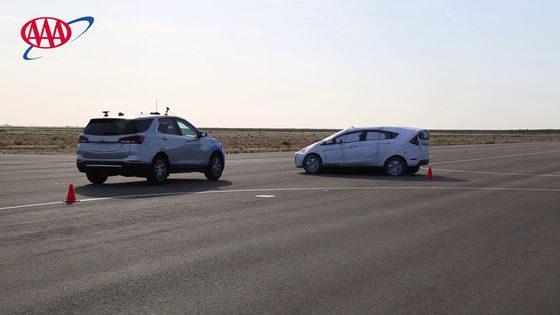
Collision without the appearance of braking as it is.
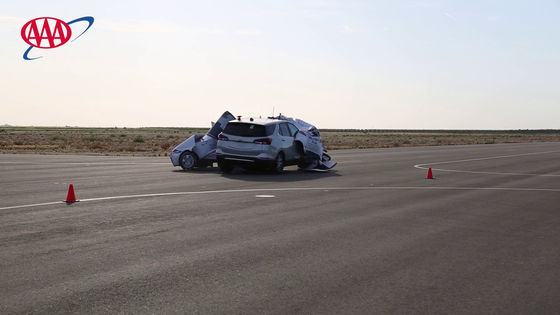
The probability that AEBS would prevent a collision in this situation was 0%.
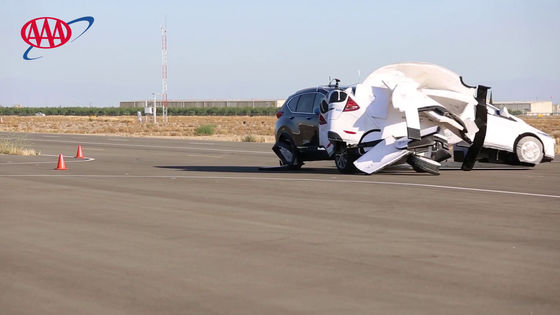
Next, the operation test of AEBS in the scene of colliding with an oncoming vehicle when turning left

Test whether AEBS works when trying to turn left while ignoring an oncoming vehicle.
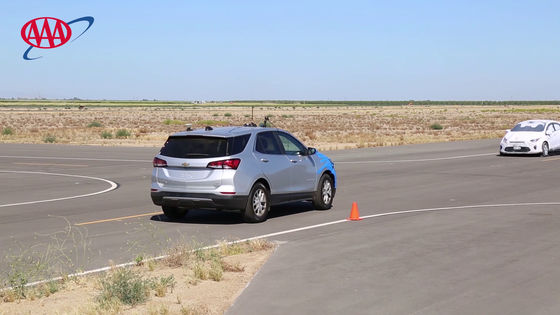
Even in this case, the probability that AEBS will prevent a collision accident is 0%.
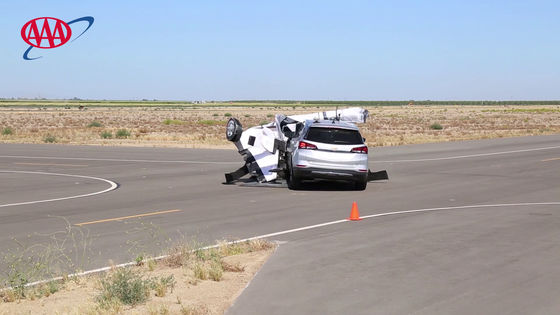
Test whether AEBS can prevent rear-end collision with a vehicle stopped in front while traveling at 30 mph
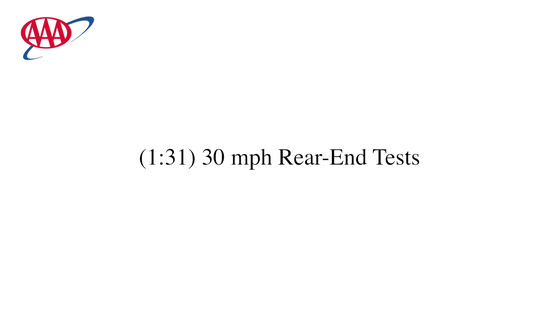
As a result of the test, when traveling at 30 miles per hour, it succeeded in preventing a collision with a stopped vehicle 17 times (85%) out of 20 times. Also, it seems that the collision occurred after reducing the speed by 86% at the time of the accident.
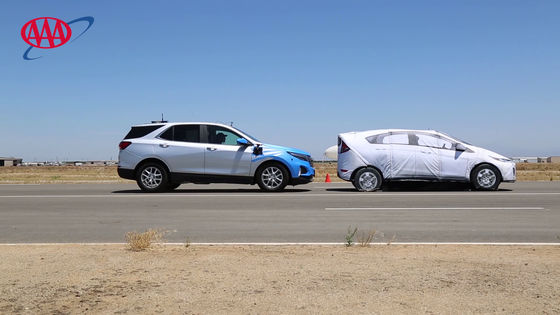
Test whether AEBS can prevent rear-end collision with a vehicle stopped in front while traveling at 40 mph
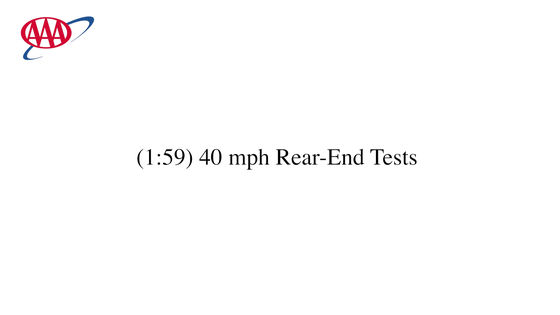
Only 6 out of 20 (30%) collisions could be avoided when driving at 40 mph. The average deceleration rate when colliding with a stopped vehicle is 62%.
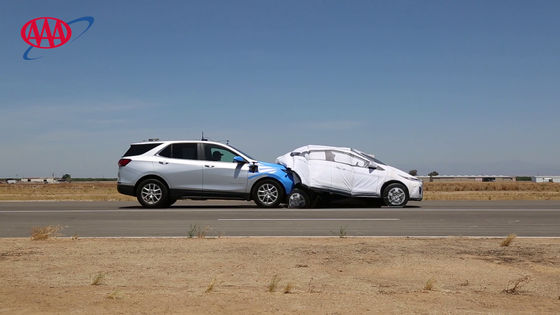
In some cases, it collides quite vigorously ......
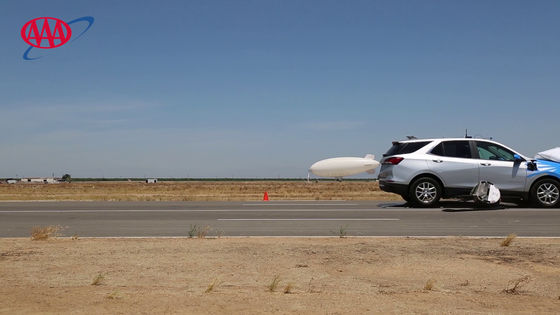
In some cases, it's just a gentle rear-end collision.
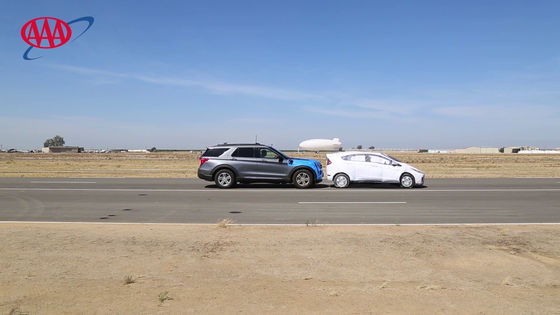
In addition, AAA used the 2022 model ' 2022 Chevy Equinox ', the 2022 model ' Ford Explorer XLT ', the 2022 model Honda ' CR-V ', and the 2022 model Toyota ' RAV4 LE '. 4 vehicles, each of which had been properly serviced by the dealer, were used for testing.
Related Posts:







